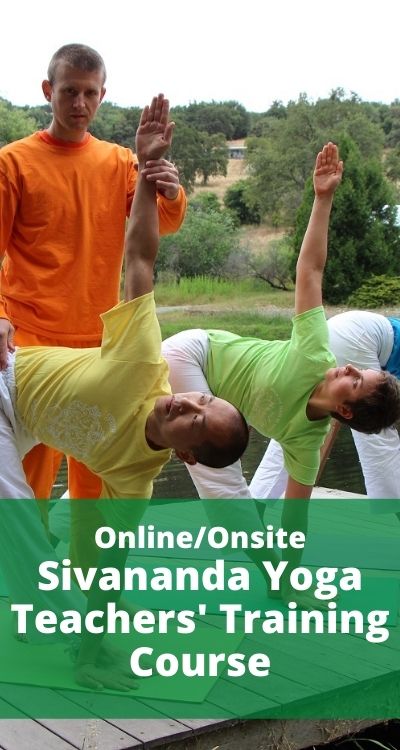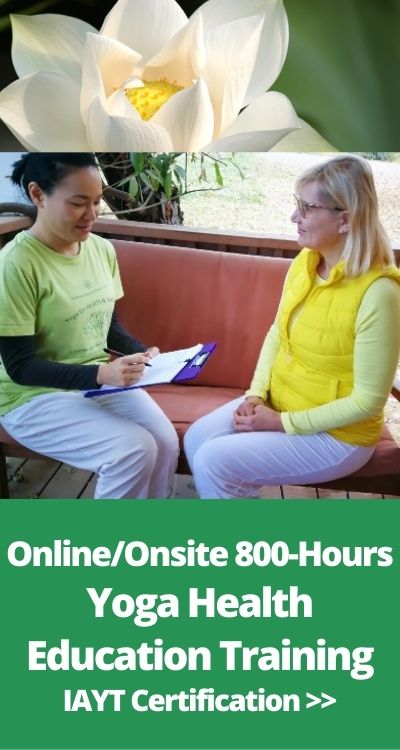This podcast is a recording of a Sivananda Yoga Class. Please listen to the class and practice along. You can see our website for more details on the practice. Enjoy!
1. Beginning prayer and a short relaxation (savasana)
2. Breathing (Pranayama) (15 – 20 minutes)
3. Sun salutations (Surya namaskar)
4. The 12 basic yoga poses (asanas)
5. Some additional yoga poses (asanas) and variations
5a. An example of a properly sequenced yoga practice session
6. Final Relaxation (15 minutes)
7. Ending prayers
8. General Guidelines to follow in a Yoga Class
9. Benefits of the Yoga Poses and Pranayama practice
General Guidelines
Place & Setting
- Eat at least 2 hours before the asana session. It is difficult to perform asanas with a full stomach. Also, do not eat or drink half an hour after the session.
- The best time is early morning, after meditation.
- Find a cool and ventilated, quiet place with an even, level floor. The best place is a space reserved for Yoga and meditation, with an altar. It is suggested not to do Yoga in the bedroom as the energy is more tamasic.
- It is better to practice in silence without music or chanting.
- Group performance of asanas brings about awareness of collective energy.
- Wear light and loose fitting cotton clothing for better efficiency of movement.
- Use a sticky Yoga mat for better grip.
Order, Timing & Rythm
- Perform the sequence of the postures in order. This will ensure the proper flow of energy.
- Try to hold each posture for at least one minute to three minutes. It is said that holding for three minutes is the minimum time required to get all the benefits of the postures.
- The sequence of the postures follows the chakras, stimulating the chakras from the top down.
- The headstand cycle goes first and the standing cycle goes last because of the spiritual principle of turning inward first to find inner balance (headstand inverts all energies, stimulating the highest chakra, going against normal tendencies, after which the energy is flowing properly) then tuning the mind outward and trying to achieve balance and composition with worldly activities (standing postures are performed with the focus on external object to ground oneself).
- Practice daily, or at least 4 times a week, for 1-2 hours for maximum benefit.
Breath & Mind Awareness
- Breathe consciously during the performance of postures. When holding the posture, the breath becomes calm and the mind focused.
- When holding, know where to concentrate for the specific posture.
- If there is tension, focus your attention on the tension, breathe consciously while focusing on the area, sending prana to the muscles or ligaments, and during every exhalation try to progress a little more.
- Keep the mind inspired by being aware of the physical and mental benefits of each posture.
- Yoga is not a competition, so try to do what you can but observe your limit. Always try to feel comfortable. Never push yourself to the point of pain, strain or exhaustion.
- Do not compare or compete with each other when perform in group.
Body Awareness
- Gentle modifications, adjustments and variations can be included if you experience any pain or strain while holding an asana. Some accessible examples include chair yoga, gentle yoga and restorative yoga. Click here to learn more about specialized yoga practices.
- Be aware of your body throughout the session. Keep your mind focused inward and enjoy the practice.
- Always relax in between the postures, with deep breathing to restore the prana and avoid fatigue.
- If there is no time, stick to the basic 12 postures without variations, you will still get the maximum benefit.
Asana Considerations
- For beginners, take the time to practice headstand by preparing your arm strength with Dolphin.
- Achieve balance through posture and counter posture, on both the right and left sides, holding the postures on each side for an equal length of time.
- If you do variations, make sure that you have time for the basic postures first. Do not skip postures.
- Try to practice asanas with eyes closed, creating an inner focus.
- If possible, it is better to perform the asanas without any props. It is a very natural way of exercising.
- To maximize the benefit of the session, keep the energy internalized and calm and do not rush right away into worldly activities.
- Always spend at least 10 minutes in Savasana at the end; it allows you to integrate all of the benefits.
- Do not take a bath right away but allow the prana to remain for some time.





How many breaths should I take in each Adams to reach 1 minute?
10-12